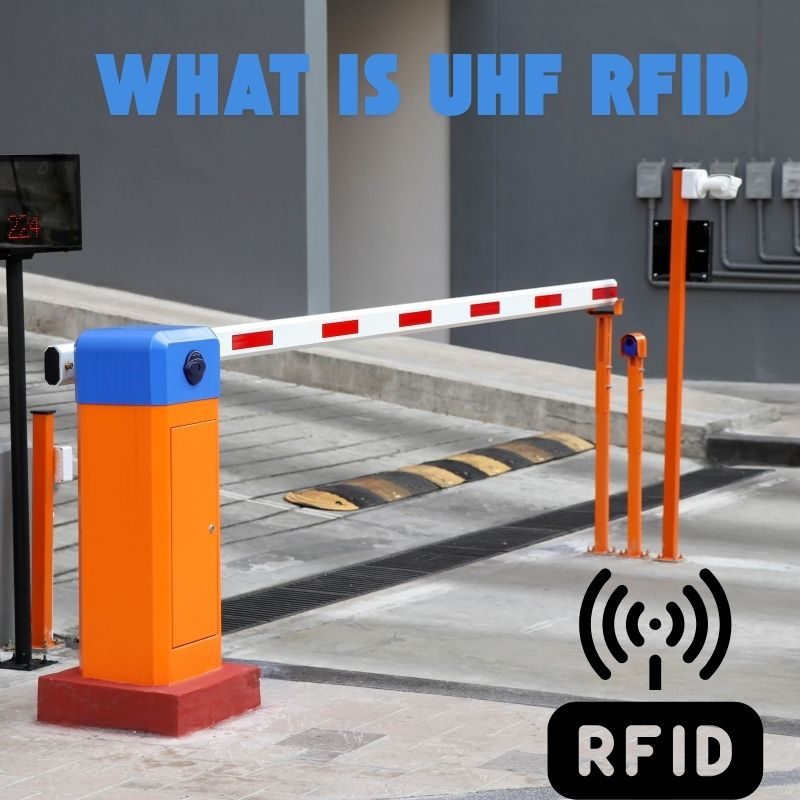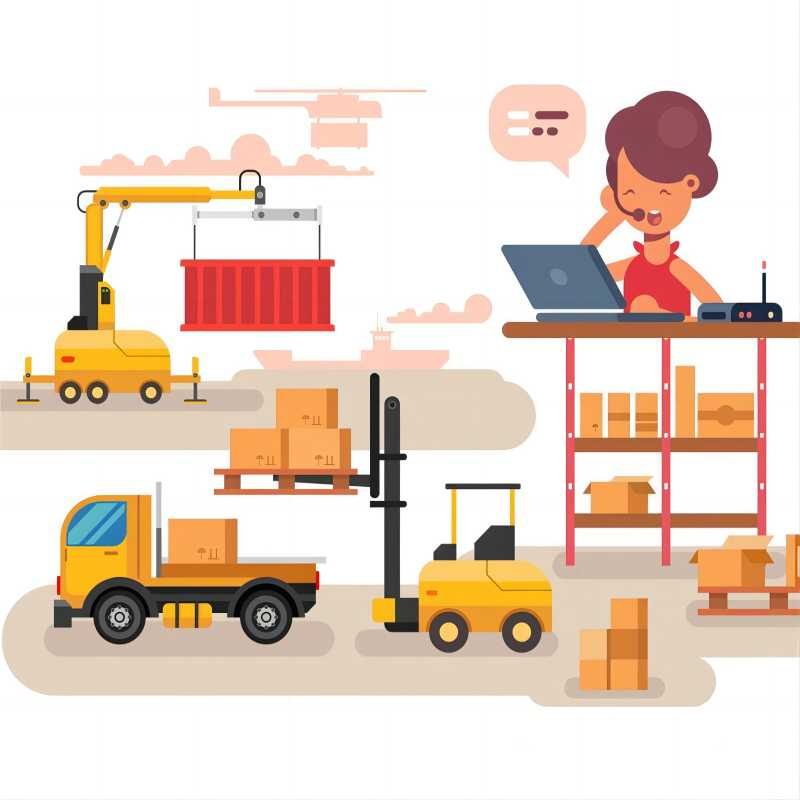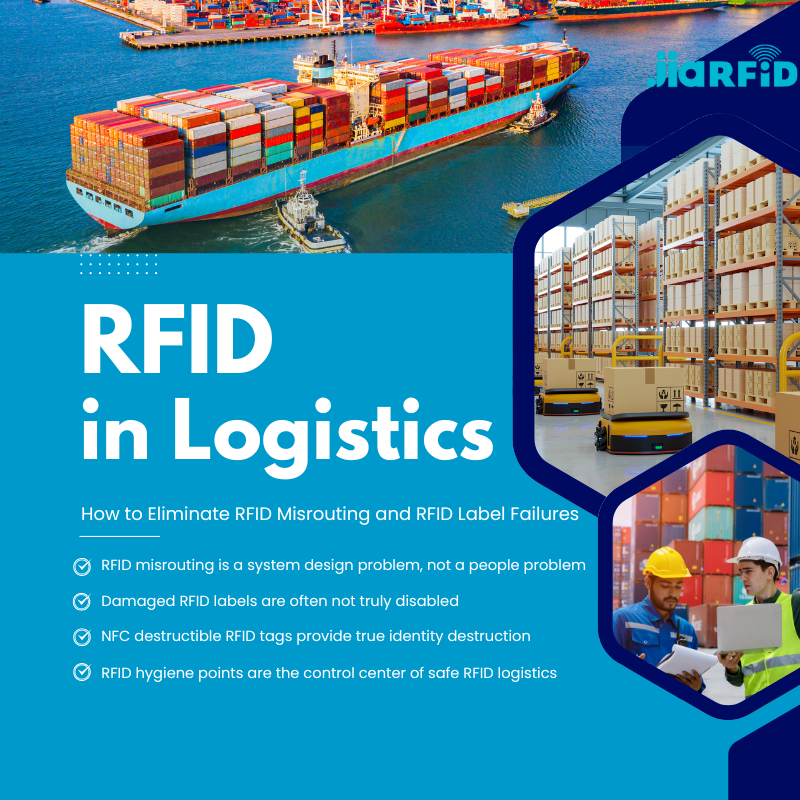
Was ist UHF-RFID?
Inhaltsverzeichnis
Einführung
RFID-Technologie (Ultra-High Frequency Radio Frequency Identification) ist eine hochmoderne Identifikationstechnologie, die in verschiedenen Branchen zunehmend an Bedeutung gewinnt. Von Einzelhandel und Logistik bis hin zu Gesundheitswesen und Landwirtschaft – ihre Fähigkeit, einen schnellen, kontaktlosen Datenaustausch zu ermöglichen, verändert die Arbeitsweise von Unternehmen grundlegend.
Ob Sie sich zum ersten Mal mit RFID beschäftigen oder Ihr Verständnis vertiefen möchten, dieser Leitfaden führt Sie durch die Grundlagen. RFID-Technologie ist, wie es funktioniert, seine Anwendungsbereiche und warum es eine unverzichtbare Technologie im Jahr 2025 ist.

Was ist UHF-RFID?
UHF-RFID, kurz für Ultra-High Frequency Radio Frequency Identification (Ultrahochfrequenz-Radiofrequenzidentifikation), ist eine drahtlose Kommunikationstechnologie, die Radiowellen nutzt, um an Objekten angebrachte Tags zu identifizieren und zu verfolgen. Es handelt sich um eine der drei wichtigsten Frequenzkategorien in der RFID-Technologie – die beiden anderen sind Niederfrequenz (LF) und Hochfrequenz (HF).
UHF arbeitet in der Regel im Bereich von 860 MHz bis 960 MHz und ist bekannt für:
- Größere Lesereichweiten (bis zu 12 Meter oder mehr)
- Schnellere Datenübertragung
- Möglichkeit zum Lesen großer Datenmengen
Einfacher ausgedrückt ist UHF-RFID wie ein digitaler “Barcode auf Steroiden” – es ist keine Sichtverbindung erforderlich, und Hunderte von Artikeln können sofort gelesen werden.
Wie funktioniert UHF-RFID?
Um zu verstehen, wie UHF-RFID funktioniert, betrachten wir zunächst seine Kernkomponenten:
- RFID-Tags: Enthalten einen Mikrochip und eine Antenne, die Daten speichern.
- RFID-Lesegeräte: Senden Sie Funkwellen aus und empfangen Sie Daten von Tags.
- Antennen: Verstärken Sie das Signal zwischen Tags und Lesegeräten.
- Middleware/Software: Verarbeitet und verwaltet die gesammelten Daten.
Es gibt zwei Haupttypen von UHF-RFID-Tags:
- Passive UHF-Tags: Verlassen Sie sich auf die Energie aus dem Signal des Lesegeräts; kostengünstiger und weit verbreitet.
- Aktive UHF-Tags: Batteriebetrieben; geeignet für Anwendungen mit großer Reichweite und Echtzeitanwendungen.
Wichtigste Funktionen:
- Der Leser sendet ein Signal im UHF-Band aus.
- Der Tag erhält Energie, schaltet sich ein und sendet seine Daten zurück.
- Der Leser sammelt diese Daten und sendet sie zur Verarbeitung an ein Backend-System.
Das System kann mehrere Tags gleichzeitig lesen, selbst bei hohen Geschwindigkeiten. Damit eignet sich UHF-RFID ideal für dynamische Umgebungen wie Förderbänder oder schnell bewegliche Bestände.
Vorteile der UHF-RFID-Technologie
Warum gewinnt UHF-RFID so stark an Bedeutung? Weil es reale Herausforderungen im Bereich der Nachverfolgung und Automatisierung löst. Hier sind die herausragenden Vorteile:
- Große Lesereichweite: Bis zu 12 Meter, selbst in rauen Umgebungen
- Massenlesung: Hunderte von Tags in Sekundenschnelle lesen
- Kosteneffizient: Passive Tags sind für den großflächigen Einsatz erschwinglich.
- Echtzeit-Sichtbarkeit: Sofortige Aktualisierungen zu Beständen und Vermögensbewegungen
- Nicht in Sichtweite: Kein direktes Scannen wie bei Barcodes erforderlich
- Skalierbarkeit: Geeignet für kleine Betriebe oder globale Lieferketten
Kurz gesagt, es steigert die Effizienz, Genauigkeit und Automatisierung – wichtige Säulen für moderne Unternehmen.
Häufige Anwendungen von UHF-RFID
UHF-RFID hat sich zu einer Kerntechnologie in modernen Automatisierungs- und Tracking-Systemen entwickelt und bietet eine außergewöhnliche Reichweite, Geschwindigkeit und Vielseitigkeit. Seine Fähigkeit, Hunderte von Tags gleichzeitig und über große Entfernungen hinweg zu lesen, macht es für eine Vielzahl von Branchen unverzichtbar.
Einzelhandel
- Bestandskontrolle
- Anti-Diebstahl-Systeme
- Automatisierte Kasse
- Bestandsaktualisierungen in Echtzeit
Logistik und Lieferkette
- Sendungsverfolgung
- Palettenmanagement
- Cross-Docking-Vorgänge
- Liefernachweis
Herstellung
- Verfolgung unfertiger Arbeiten (WIP)
- Qualitätskontrolle
- Anlagenüberwachung
Gesundheitspflege
- Patientenarmbänder
- Geräteverfolgung
- Pharmazeutischer Bestand
Landwirtschaft
- Überwachung von Nutztieren
- Verfolgung von landwirtschaftlichen Geräten
- Intelligente Bewässerungssysteme
Bibliotheken und Bildung
- Buchverfolgung
- Labor-Asset-Management
- Zutrittskontrolle
Unabhängig von der Branche bietet UHF-RFID Echtzeit-Transparenz, Effizienz und Rückverfolgbarkeit.
UHF-RFID im Vergleich zu HF- und LF-RFID – Die wichtigsten Unterschiede
| Besonderheit | LF (Niedrige Frequenz) | HF (Hochfrequenz) | UHF (Ultrahochfrequenz) |
|---|---|---|---|
| Frequenz | 125-134 kHz | 13,56 MHz | 860-960 MHz |
| Lesebereich | ~10 cm | ~1 m | Bis zu 12 m |
| Datengeschwindigkeit | Langsam | Mäßig | Schnell |
| Kosten | Niedrig | Mäßig | Variiert |
| Anwendungsfälle | Tierverfolgung | Kontaktloses Bezahlen | Lieferkette, Einzelhandel, Logistik |
UHF-RFID bietet die größte Lesereichweite und die schnellste Leistung und eignet sich daher ideal für schnelllebige Umgebungen und die Verfolgung großer Mengen.
UHF-RFID-Normen und Vorschriften
Standards regeln die weltweite Nutzung von UHF-RFID, um Kompatibilität zu gewährleisten:
- EPCglobal Gen2 / ISO 18000-6C: Industriestandard für passive UHF-RFID
- FCC (USA): Arbeitet im Frequenzbereich 902–928 MHz
- ETSI (Europa): Arbeitet im Frequenzbereich 865–868 MHz
- Andere Regionen: Je nach Telekommunikationsvorschriften leicht abweichend
Bei der weltweiten Einführung von UHF-RFID ist es von entscheidender Bedeutung, die Einhaltung regionaler Frequenzvorschriften sicherzustellen.
Arten von UHF-RFID-Tags
Passive UHF-RFID-Tags
- Am häufigsten
- Kosteneffizient
- Verwendung im Einzelhandel, in der Logistik usw.
Aktive UHF-RFID-Tags
- Batteriebetrieben
- Größere Reichweite
- Verwendung bei der Verfolgung hochwertiger Vermögenswerte
Semi-Passive (BAP) Tags
- Batterieunterstützt für bessere Leistung
Tag-Formfaktoren
- Einlagen
- Etiketten
- Hartetiketten
- Robuste Tags für Metall oder raue Umgebungen
Wählen Sie den Tag-Typ entsprechend Ihrer Umgebung, den Reichweitenanforderungen und Ihrem Budget aus.
Herausforderungen und Grenzen von UHF-RFID
Wie jede Technologie ist auch UHF-RFID nicht perfekt. Folgendes ist zu beachten:
- Störungen durch Metall und Flüssigkeiten: Kann Signale blockieren oder verzerren
- Umweltfaktoren: Extreme Temperaturen können die Leistung beeinträchtigen.
- Sichtlinienbeschränkungen: Tags in dichten Stapeln können möglicherweise nicht zuverlässig gelesen werden.
- Vorabkosten: Die Einrichtung der Infrastruktur kann teuer sein.
- Datenüberlastung: Erfordert robuste Software zur Verarbeitung umfangreicher Datenerfassungen
Mit sorgfältiger Planung lassen sich diese Einschränkungen jedoch minimieren oder vollständig beseitigen.

Zukünftige Trends bei UHF-RFID (2025 und darüber hinaus)
UHF-RFID ist nicht nur hier, um zu bleiben – es entwickelt sich auch schnell weiter. Zu den Trends gehören:
- Integration mit IoT: Intelligente Sensoren + RFID = leistungsstarke Dateneinblicke
- Cloud-basierte RFID-Systeme: Tags von überall aus verwalten
- KI und maschinelles Lernen: Vorausschauende Analysen unter Verwendung von RFID-Daten
- Intelligente Städte und Infrastruktur: Verkehrsfluss, Abfallwirtschaft und mehr
- Industrie 4.0: Echtzeit-Fabrikautomatisierung und digitale Zwillinge
Angesichts niedrigerer Kosten und besserer Leistung ist bis zum Ende des Jahrzehnts mit einer breiten Akzeptanz in allen Branchen zu rechnen.
Ist UHF-RFID das Richtige für Sie?
UHF-RFID ist eine leistungsstarke, skalierbare Technologie, mit der Ihr Unternehmen manuelle Prozesse reduzieren, Verluste senken und die Transparenz verbessern kann. Ganz gleich, ob Sie ein Lager verwalten oder hochwertige medizinische Geräte verfolgen – die Vorteile der Datenerfassung über große Entfernungen und mit hoher Geschwindigkeit sind bahnbrechend.
Aber wie bei jeder Technologie liegt der Erfolg darin, ihre Stärken zu verstehen und sie richtig einzusetzen.
Sind Sie bereit, UHF-RFID für Ihr Unternehmen zu entdecken? Beginnen Sie mit einer Beratung durch einen Vertrauenswürdiger Anbieter von RFID-Lösungen oder ein Pilotprogramm zur Bewertung Ihrer Bedürfnisse durchzuführen.
Häufig gestellte Fragen zur UHF-RFID-Technologie
Wofür steht UHF RFID?
UHF-RFID steht für Ultra-High Frequency Radio Frequency Identification (Ultrahochfrequenz-Radiofrequenzidentifikation). Es bezieht sich auf RFID-Systeme, die im Frequenzbereich von 860 bis 960 MHz arbeiten und Tags aus einer Entfernung von mehreren Metern lesen können.
Wie funktioniert UHF-RFID?
UHF-RFID-Systeme nutzen Funkwellen für die Kommunikation zwischen einem Lesegerät und einem Tag. Das Lesegerät sendet ein Signal aus, das passive Tags mit Strom versorgt, die dann ihre Daten an das Lesegerät zurücksenden. Dies ermöglicht eine schnelle, drahtlose Identifizierung von Objekten, ohne dass eine direkte Sichtverbindung erforderlich ist.
Was ist die Reichweite eines UHF-RFID-Systems?
UHF-RFID-Systeme haben in der Regel eine Lesereichweite von 3 bis 12 Metern (10 bis 40 Fuß) für passive Tags. Aktive Tags mit Batterien können die Reichweite erheblich erweitern, manchmal bis zu 100 Meter oder mehr.

Ray Zhou
Dieser Artikel wurde von Ray Zhou verfasst, einem RFID-Technologieexperten mit mehr als 10 Jahren Branchenerfahrung.
Kommentare
heiße Produkte

RFID in der Logistik: Wie man RFID-Fehlleitungen und RFID-Etikettenfehler beseitigt
RFID in der Logistik ist mehr als nur ein Werkzeug zur Beschleunigung von Prozessen. Es ist zu einem wesentlichen Bestandteil der Funktionsweise moderner Lieferketten geworden.

Was ist RFID-Abfallmanagement?
Stellen Sie sich eine Stadt vor, in der jeder Mülleimer spricht – nicht im wörtlichen Sinne, sondern über einen winzigen Chip, der dem System mitteilt, wann er voll ist, wann er geleert wurde und wohin er gebracht wurde. Genau das leistet heute die RFID-Abfallwirtschaft.

Was sind Schraubendichtungen und ihre Anwendungen? | Vollständiger Leitfaden
Im globalen Handel und in der Logistik spielen Bolzenplomben eine entscheidende Rolle bei der Gewährleistung der Frachtsicherheit und der Einhaltung von Vorschriften. Diese kleinen, aber leistungsstarken Geräte sind so konzipiert, dass sie Schiffscontainer, Anhänger und Frachttüren mit einem manipulationssicheren Mechanismus verriegeln.

Was ist eine RFID-Kartenschutzhülle? Vorteile, Anwendungsfälle und Kaufberatung
Die RFID-Technologie (Radio Frequency Identification) ist allgegenwärtig: in Ihren Kreditkarten, Ausweisen, Fahrkarten, Hotelzimmerschlüsseln und vielem mehr. Sie bietet Schnelligkeit und Bequemlichkeit, öffnet aber auch die Tür für eine neue Art des digitalen Diebstahls, das sogenannte "Skimming". An dieser Stelle kommt ein RFID-Kartenschutz ins Spiel.

RFID-Armbänder für Veranstaltungen: Großeinkaufsleitfaden für Veranstalter
RFID-Armbänder für Veranstaltungen werden zur bevorzugten Lösung für Organisatoren, die einen schnelleren Einlass, Betrugsprävention und bargeldlose Zahlungen bei Konzerten, Festivals und Sportveranstaltungen benötigen. Im Gegensatz zu Papiertickets oder QR-Codes verwenden diese intelligenten Armbänder eingebettete Chips, um den Zugang zu rationalisieren, Transaktionen zu sichern und das Erlebnis der Gäste zu verbessern.

Wie RFID-Etiketten an der Windschutzscheibe die Fahrzeugzugangskontrolle und Mautsysteme verbessern
In der heutigen schnelllebigen Welt muss die Fahrzeugidentifizierung schnell, sicher und berührungslos sein. Ein RFID-Tag an der Windschutzscheibe bietet genau das - eine zuverlässige Möglichkeit, die Mauterhebung, das Parken und die Zufahrtskontrolle zu verwalten, ohne die Fahrzeuge anzuhalten.
Schlagwörter
VERWANDTE BLOGS

RFID in der Logistik: Wie man RFID-Fehlleitungen und RFID-Etikettenfehler beseitigt
RFID in der Logistik ist mehr als nur ein Werkzeug zur Beschleunigung von Prozessen. Es ist zu einem wesentlichen Bestandteil der Funktionsweise moderner Lieferketten geworden.

Was ist RFID-Abfallmanagement?
Stellen Sie sich eine Stadt vor, in der jeder Mülleimer spricht – nicht im wörtlichen Sinne, sondern über einen winzigen Chip, der dem System mitteilt, wann er voll ist, wann er geleert wurde und wohin er gebracht wurde. Genau das leistet heute die RFID-Abfallwirtschaft.

Was sind Schraubendichtungen und ihre Anwendungen? | Vollständiger Leitfaden
Im globalen Handel und in der Logistik spielen Bolzenplomben eine entscheidende Rolle bei der Gewährleistung der Frachtsicherheit und der Einhaltung von Vorschriften. Diese kleinen, aber leistungsstarken Geräte sind so konzipiert, dass sie Schiffscontainer, Anhänger und Frachttüren mit einem manipulationssicheren Mechanismus verriegeln.




